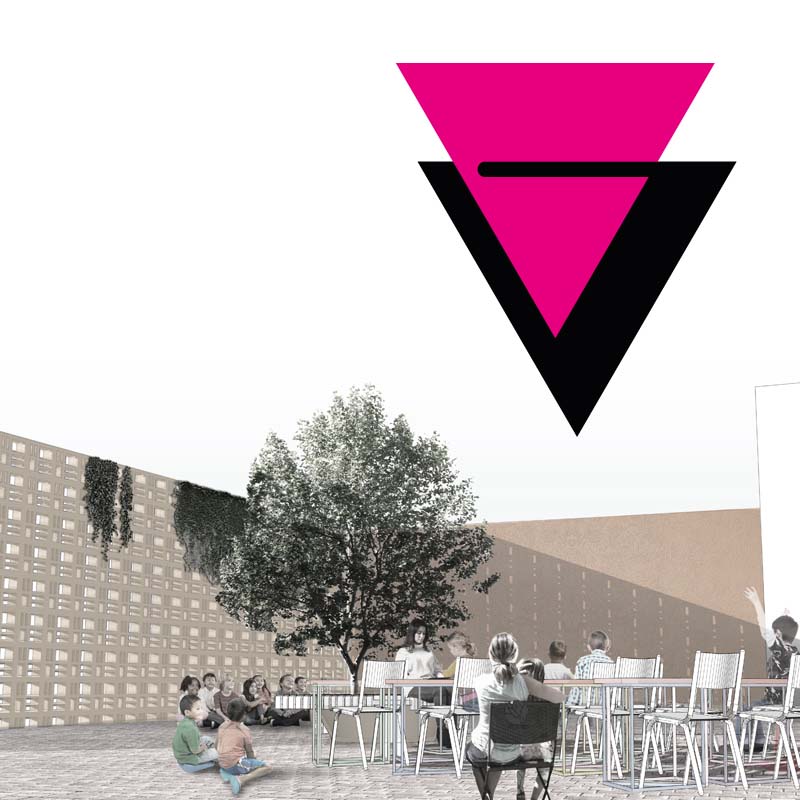

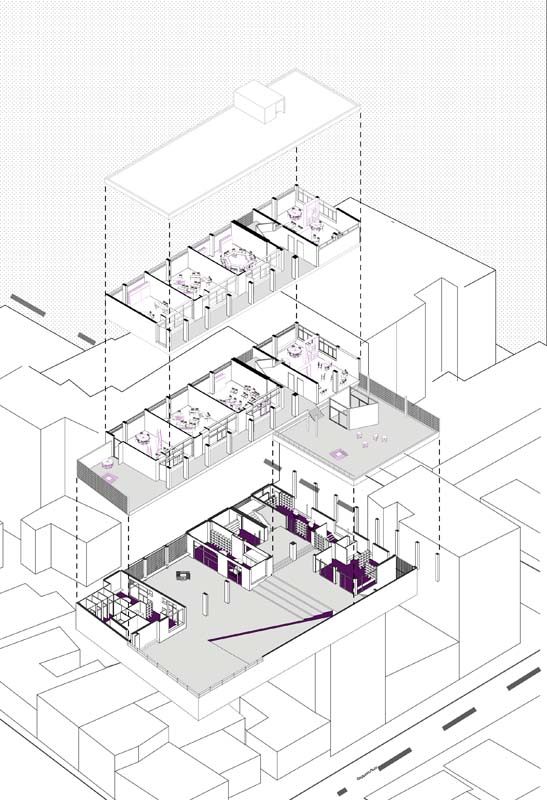

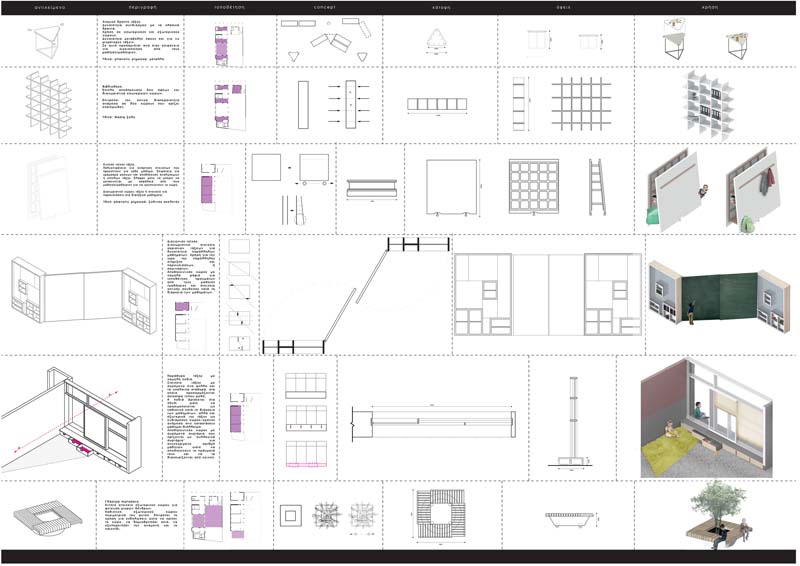

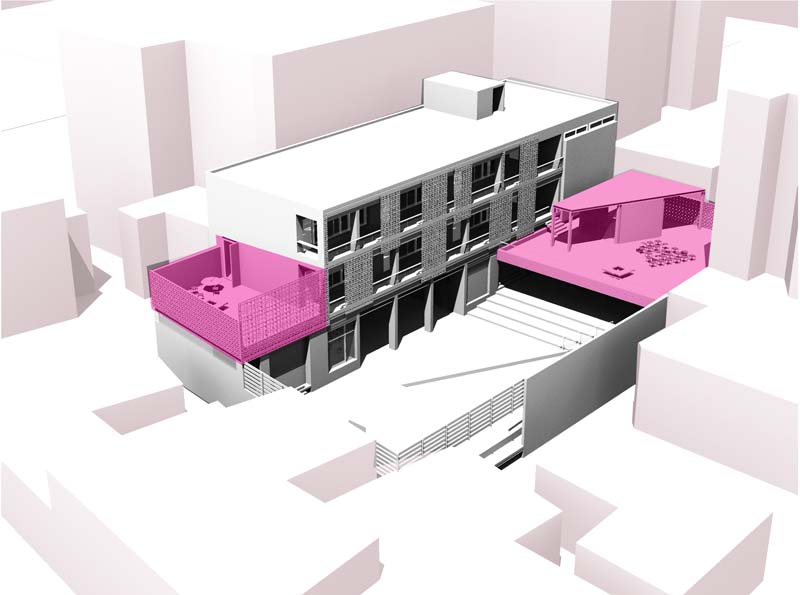

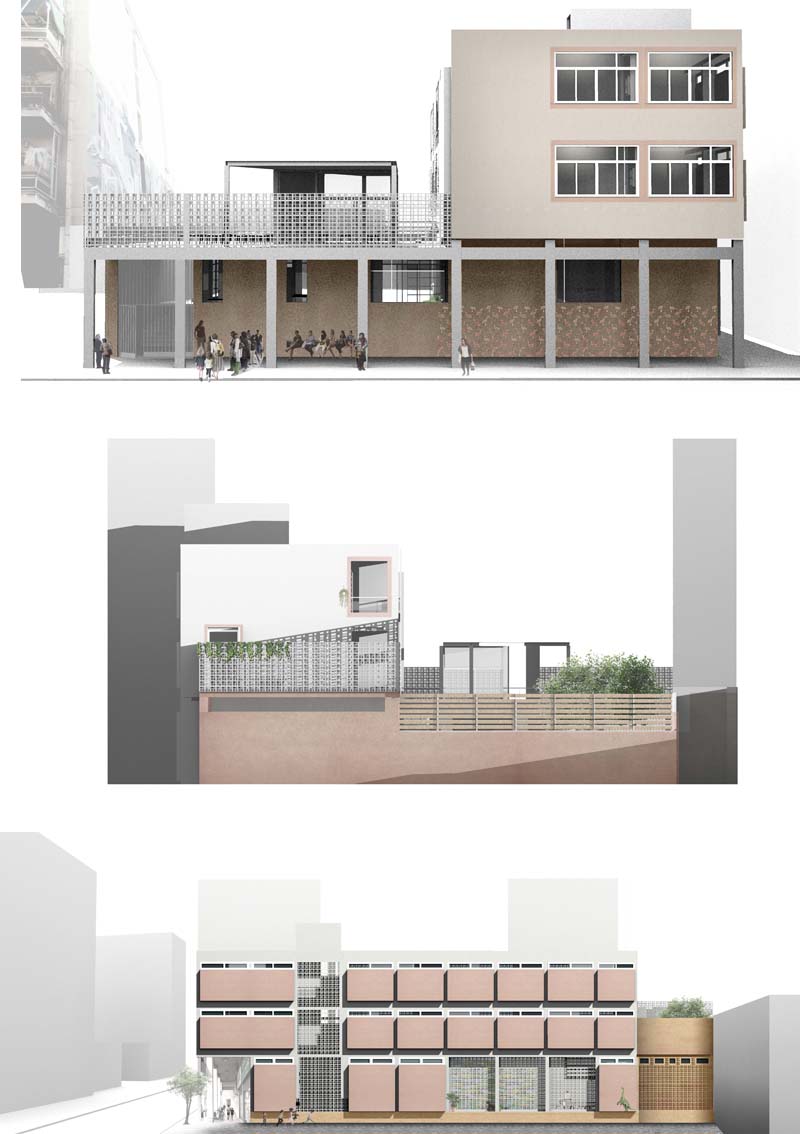

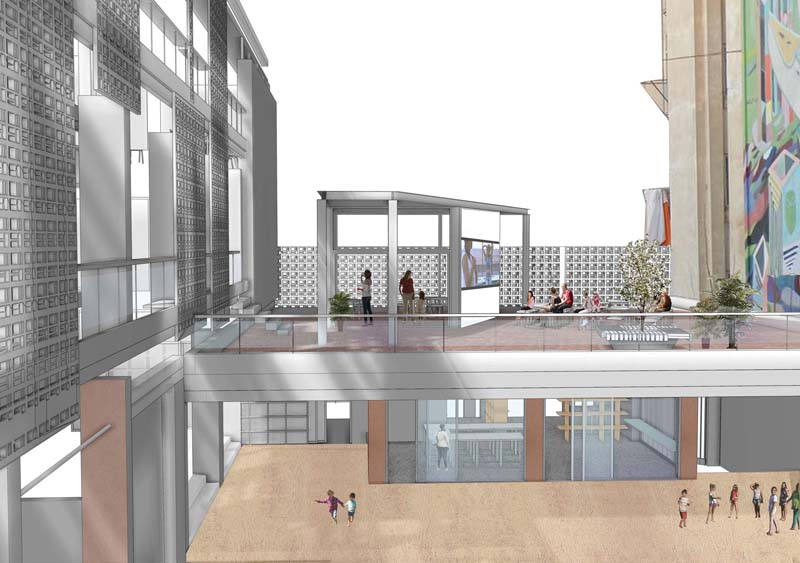

Our thesis reports on the subject of primary education from a gender studies-orientated perspective, modulating based on an intersectional feminist approach. Our study is divided and presented in three stages.
The first one contains the theoretical deepening of gender issues in the different fields of social life and, therefore, in education. Moreover contains the research and knowledge acquisition concerning the existing primary education system as well as any suggested occasional reforms. This way we develop a framework of programming changes about the gathering–incorporation of the suggested gender and diversity issued material in greek school reality.
The second stage comprises the field research at the 64th Primary School in Metaxourgheio about the current conditions there. Namely, the social factors of children, families, teaching staff and school operating mode, as much as the current building condition and the needs–constraints this spawns. Based on our conclusions, we propose design solutions ranging from renaturating space, school yard remodeling to school equipment renewal in order to compliment the already existing. Essential tool of our design method is the multiusability and the compatibility of our suggestions with the applicable regulations of the greek Ministry of Education.
Finally, the third stage of our work comprises making a stratagem, meaning exporting general conclusions and design principles capable of guiding the reshaping of every public primary school, based on this specific example. The result of our research leads to the excogitation of a non-profit collectivisation named 'Anakaah', with the cause of creating an inclusive school environment, throughout learning methods and practices, involving identity, gender and diversity politics.
Supervisor: Lykourioti Iris
Reference Number: 696
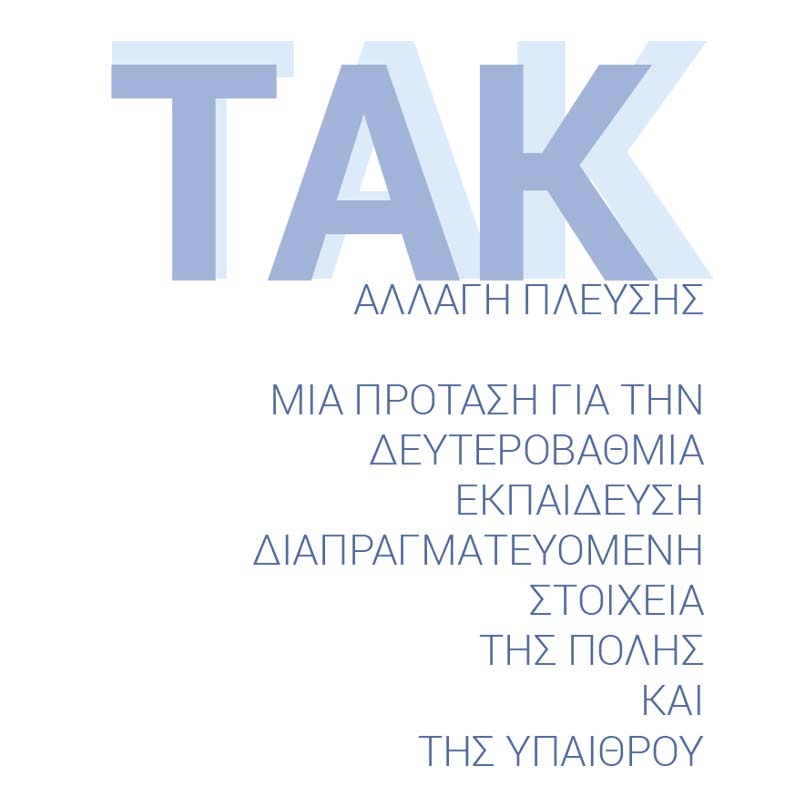

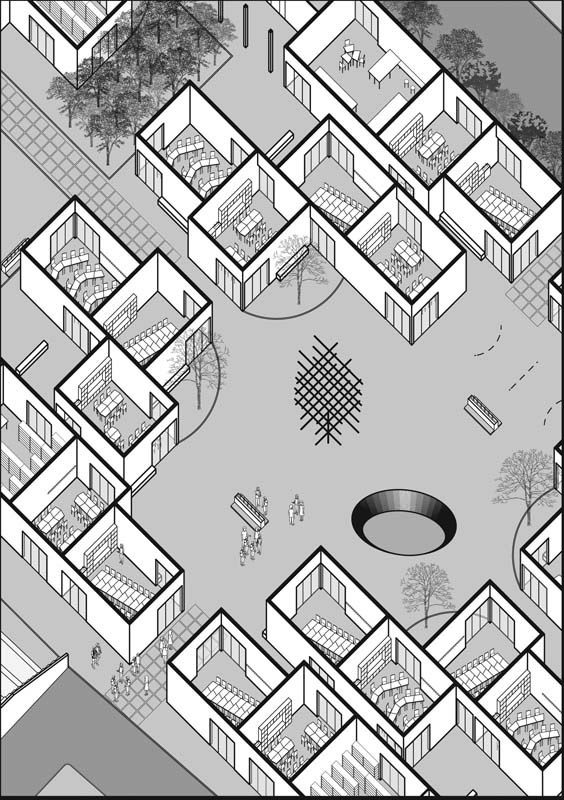

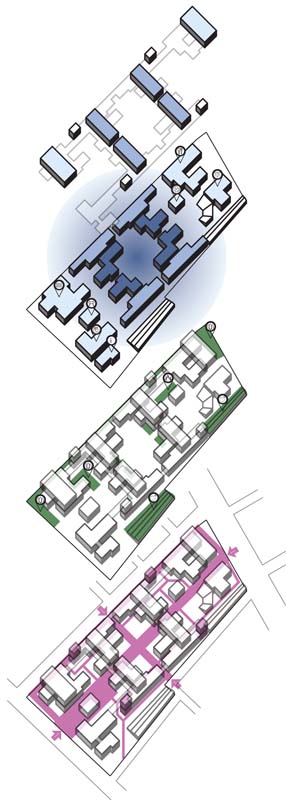

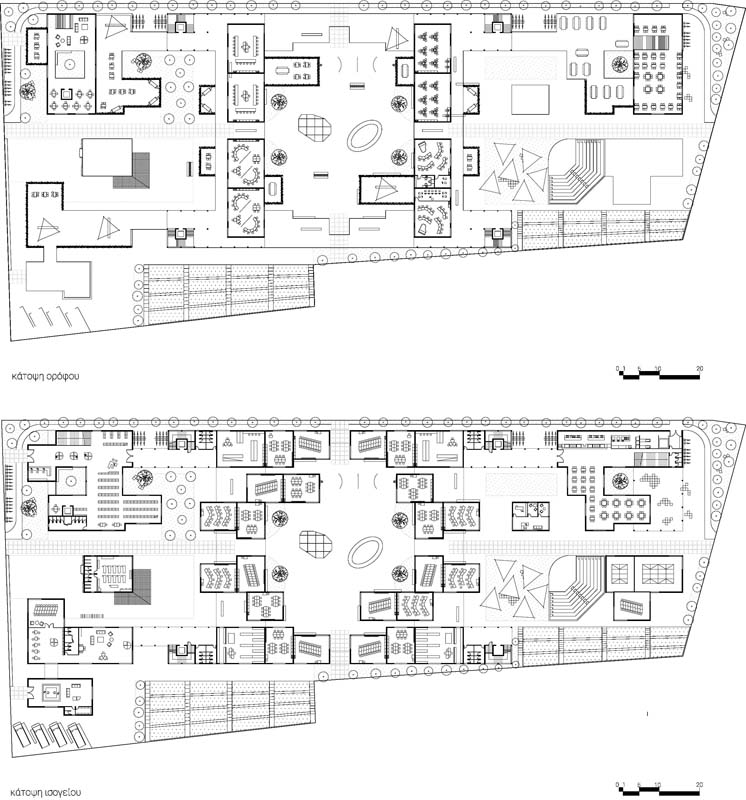

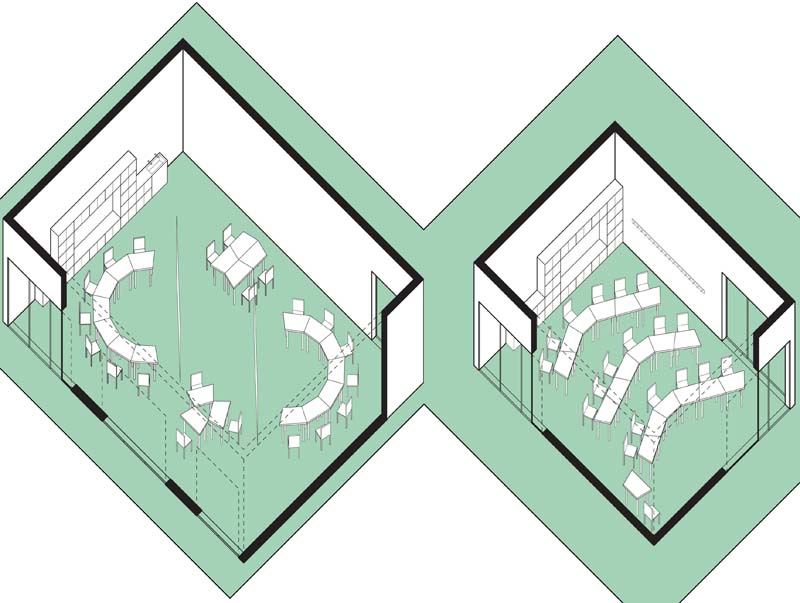

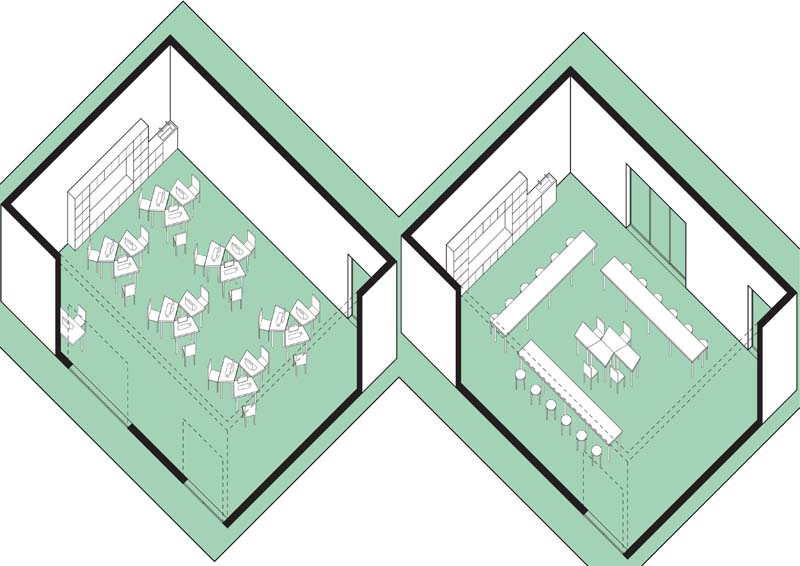

School is a constitution with specific structure and goals which usually refer to the student and furthermore society itself. School as a mechanism is surrounded by the cognitive theoretical field as well as the field of practice. The most basic approaches are those from the roots of science and education.
Within an interdisciplinary approach, we attempted to concern ourselves with the field of Education and Sociology in order to best comprehend develop this project. Through the overview of the education system, we made out various categories such as the identification of basic education elements, the scientific approach and the basic principles of learning, the interdisciplinary as a basic principle of organization and its social extension. Goal of this project is to bridge the forth mentioned information with the space and relationships within a school.
We believe that the meaning, the content, the formation of school life, that teaching and learning depend a great deal on the elements of the education process with basic subjects being the student and the teacher. The issues we concerned ourselves with are the organization and management models of education, the typology of a classroom and the theories of school life, the operation of a school complex and a school unit, the promotion and broadening of knowledge and the development of the mental, social and ethical autonomy of the students.
We attempted to create a connecting link on one side between the urban and the rural and on the other side between the teacher and the student. Goal of this approach is the creation of a more extroverted relationship between the education community and public spaces. With aim to activate the subjects themselves within the educational system, we created relationships through spacial solutions which we now propose for the creation of a new school. It is an experimental scope, a school complex for students of the age of 12-18 years old, a new proposition for a different school orientation, a change of course in the current educational system in Greece. We wish the compilation of theoretical and practical knowledge during the students course in school, we pursue knowledge through acts and social experiences and finally the development of interests of students and the promotion of self action during all learning processes, either in the cognitive, psychokinetic or artistic field.
Supervisor: Lykourioti Iris
Reference Number: 718
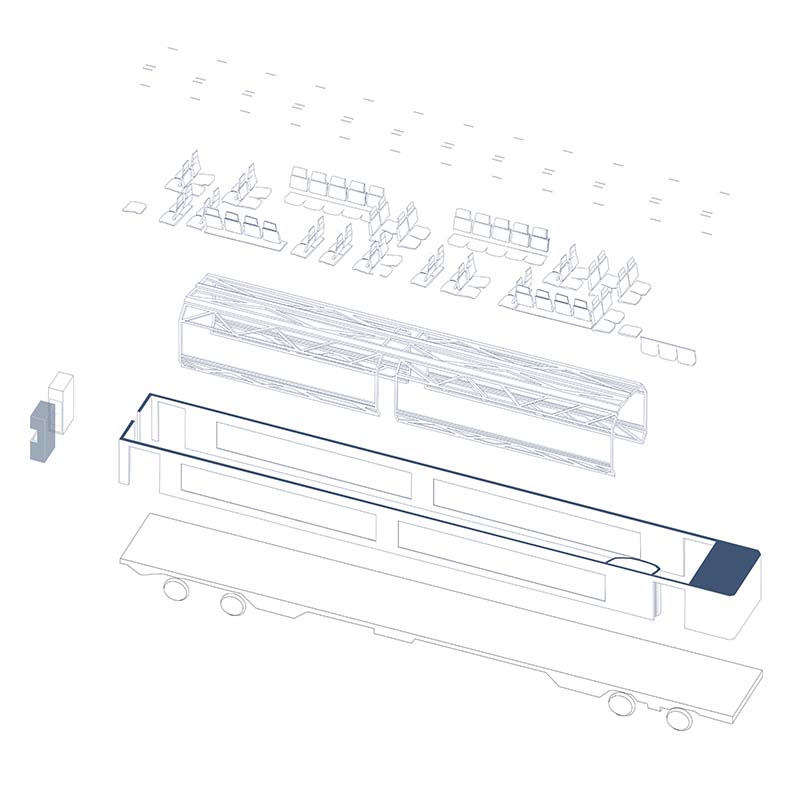

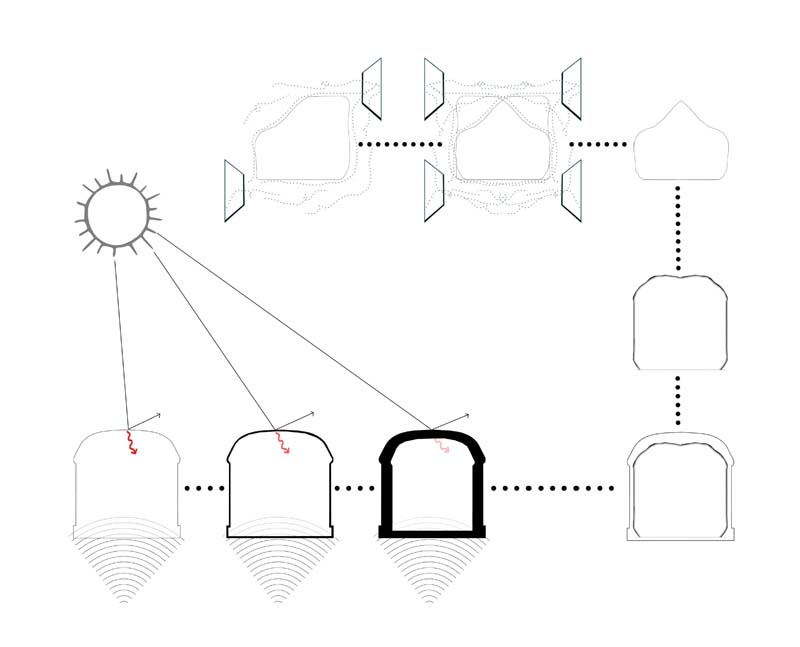

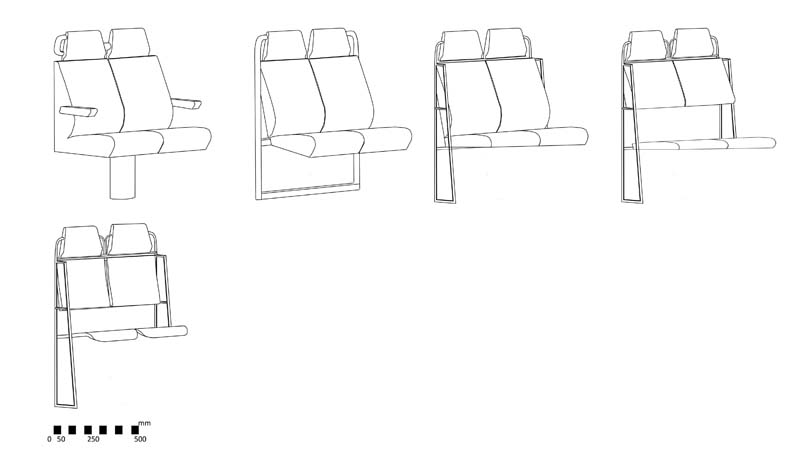

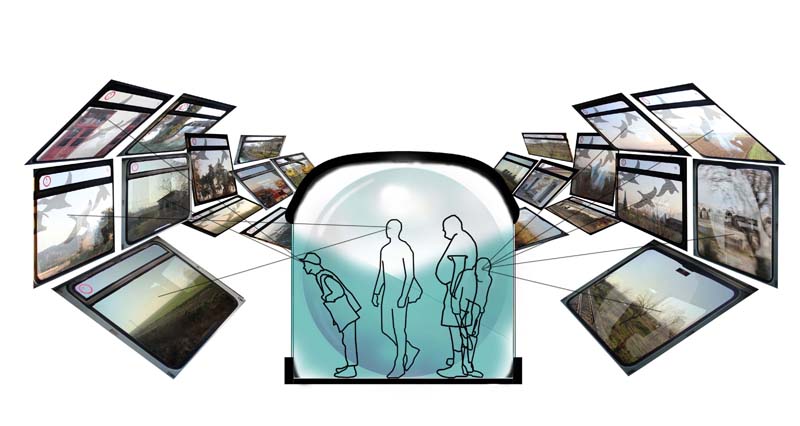

The current diploma project is dealing with the term of comfort, in the context of terminology and morphology, it the transient environment of the train. As case study is chosen a regional train that unites the cities Volos and Larisa, while centering the focus of the proposal on the interior development and the train travel conditions.
Through experiment and based on the collected data, the project is developed in three steps. Initially, a personal research takes place inside the train to analyze the environment in which the train is moving and to assess its current condition. The train’s history, its construction materials and the scenery around, inspire the development of the concept idea.
Furthermore, the passenger-user is being described by the use of a questionnaire, while physical data are collected to describe the terms of thermal, visual and acoustic comfort. The use of special equipment for measurements together with calculating software are proven of great help for a liable simulation of the space according to the existing environmental conditions. By following the above mentioned evidence as design data, the basic axis of the concept can be organized and the overall challenges can be defined.
The project is being studied from a technological view, as the sector of the rail industry keeps advancing, while keeping the human being in the center of the design and trying to reinvent the idea of a pleasant journey with the train.
According to that idea, the science of anthropometry, the study of the personal travel needs and the nostalgic approach of such a transport means, act together to produce a mixture of technology and tradition with the aim of reconnecting the passenger with the train and the outer world. Finally, the fact that the train houses a great amount of people for a limited time, underlines the importance of its public and transient character.
Supervisors: Lykourioti Iris, Tsangrassoulis Aris, Remy Nicolas
Reference Number: 684
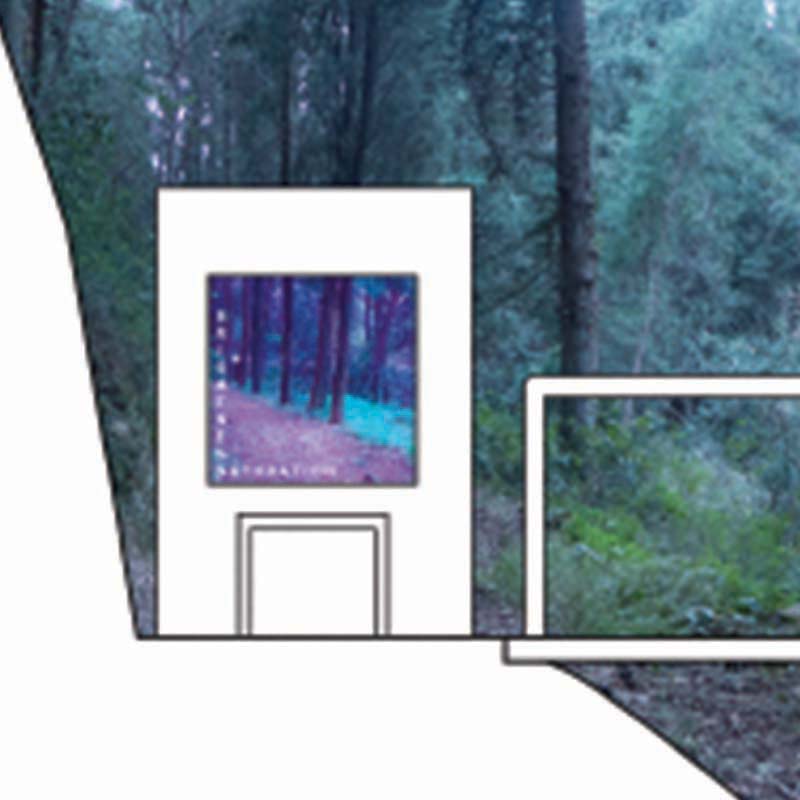



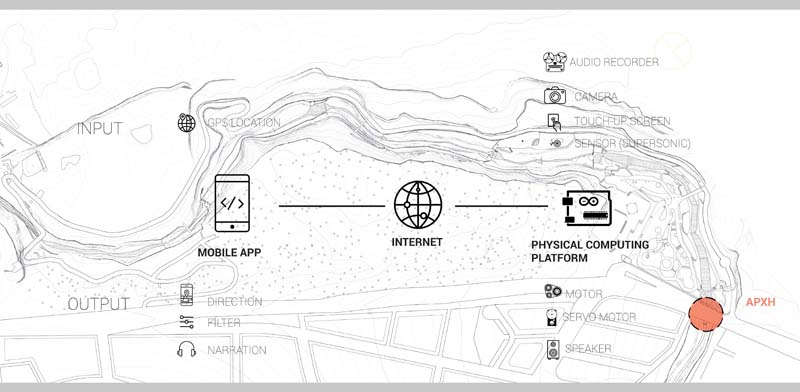

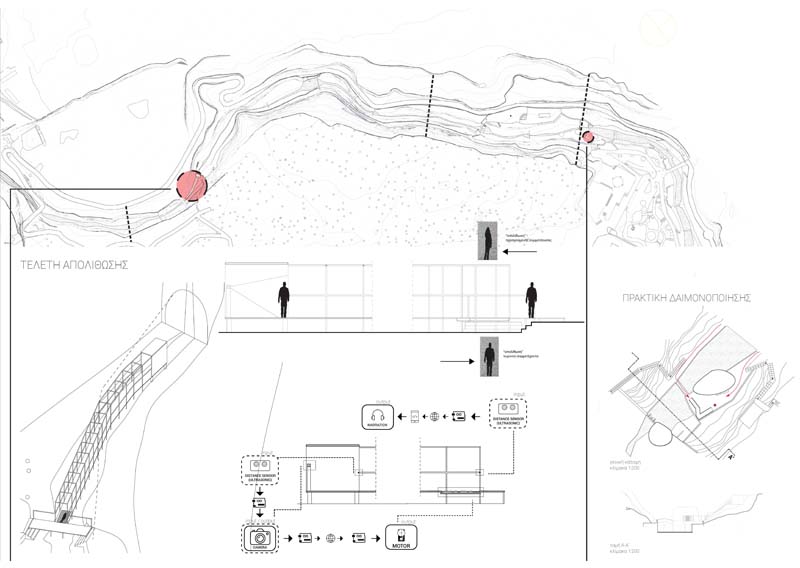



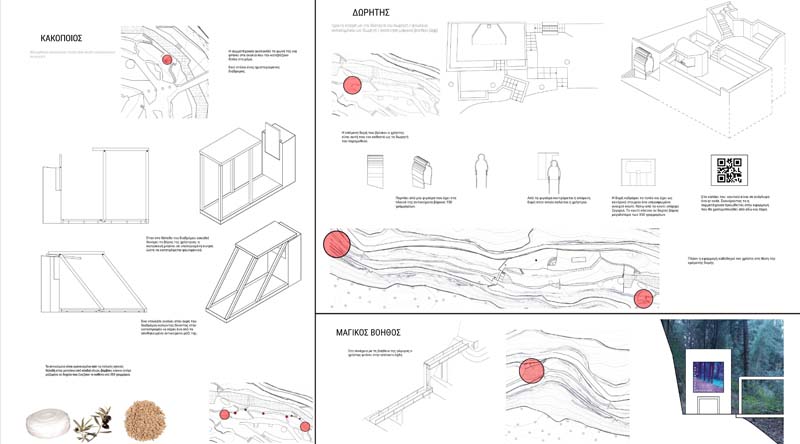

A site does not contain just its history, the lives of people that have lived there but also their imagination. Imagination that has seized space and has incorporated within itself, imagination that connects people and landscape. This imagination takes shape through speech, talks, it is spoken like a story, plausible or not, produced and applied on the site. The subject matter of this thesis is the interactivity between landscape and storytelling and the creation of a prototype digital application. For that reason augmented reality technology is used as well as physical computing for the realization of planned routes. The landscape through hearing in the first route is augmented and retells its stories while physical computing installations submerge the user in the landscape. The stories have been collected after bibliographical research. The ecosystem Rodini was selected as a landscapein the city that could work as a canvas already saturated with its own stories but also free to adopt the rest of the stories at the landscape of the island of Rhodes. It oscillates between natural and built environment, inserting the user in a structured storytelling. Two routes are proposed, one with areas as ritual places and an another one as a group of points. Using augmented reality technology (not virtual) we have the possibility to reveal the already augmented landscapes that surround us.
Supervisor: Giannisi Phoebe
Reference Number: 670


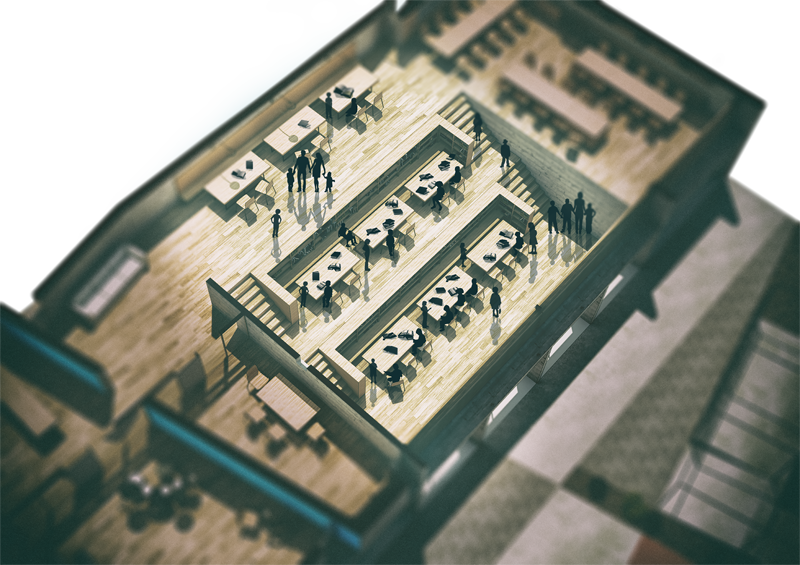

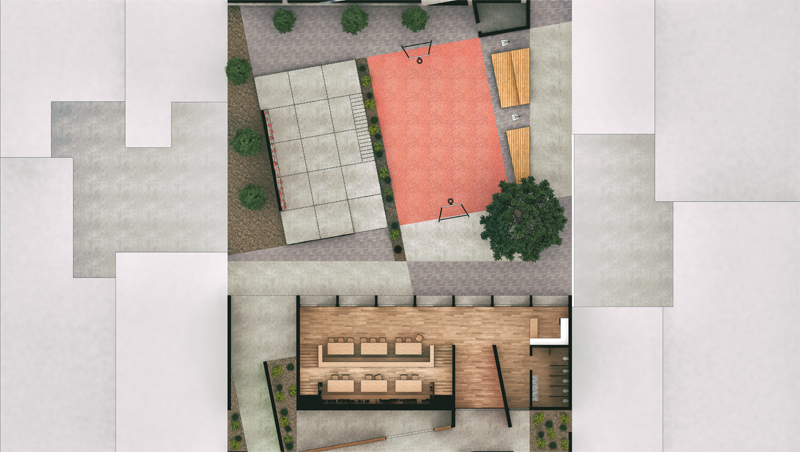

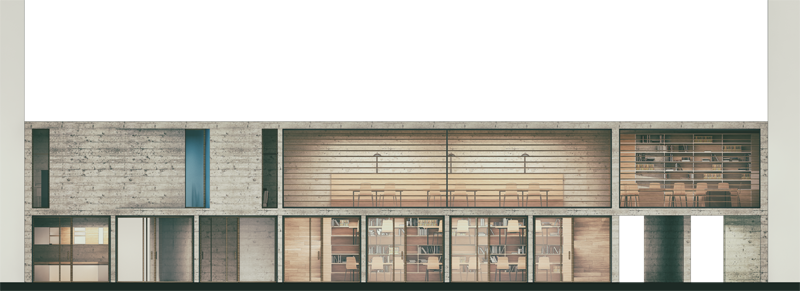

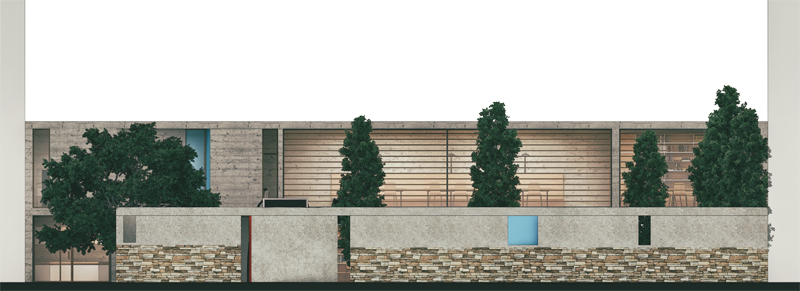



This diploma thesis deals with the synthesis of a creative work place for children with activities outside of school hours. In the same place where this diploma is been carried out, in the center of Volos there was a similar space for various years with various activities and events.
The goal of the site is to host a "hangout of the child", in a dual sense. On the one hand, the participants in it have the opportunity to engage in activities such as painting, dance, music, theater and sports; on the other hand, the building aspires to become a socialization center for children and thus to act as a "hangout" for younger ages. The "Children's Steak" does not work with a "rigorous" learning program, it just offers the place where young people and young people can choose the activity they want. So the space covers the creative wishes of the participants in it. There is a large amount of educational material available for lending such as books, paintings and digital records.
The work focuses on two themes. The first is to create an indoor space that can cover a part of activities such as dancing, music, reading and an outside. The outdoor area hosts a playground and sports facilities. The main function of outdoor space is the hosting of exhibitions of those created in the "Children's Haunt", helping to function as a center of the city and the neighborhood.
The main objective of the work is to design a creative employment space, trying to have a wider reference to the city and the neighborhood with exhibitions and performances such as music concerts, presentations, puppet shows and sports activities. There are no such spaces in the city of Volos and this work aspires to draw one and draw attention to the need for free creation spaces.
Supervisor: Kanarelis Theoklis
Reference Number: 668


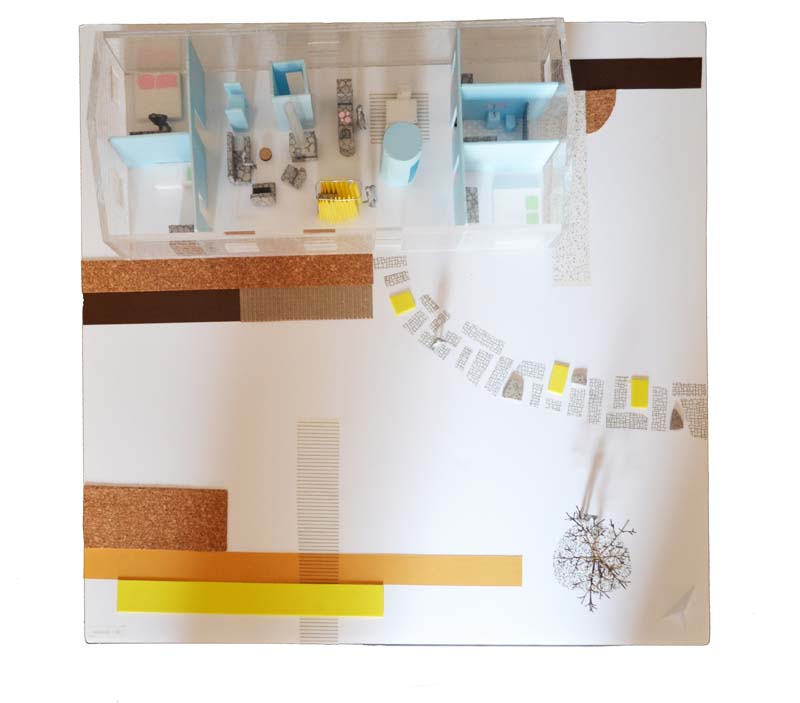

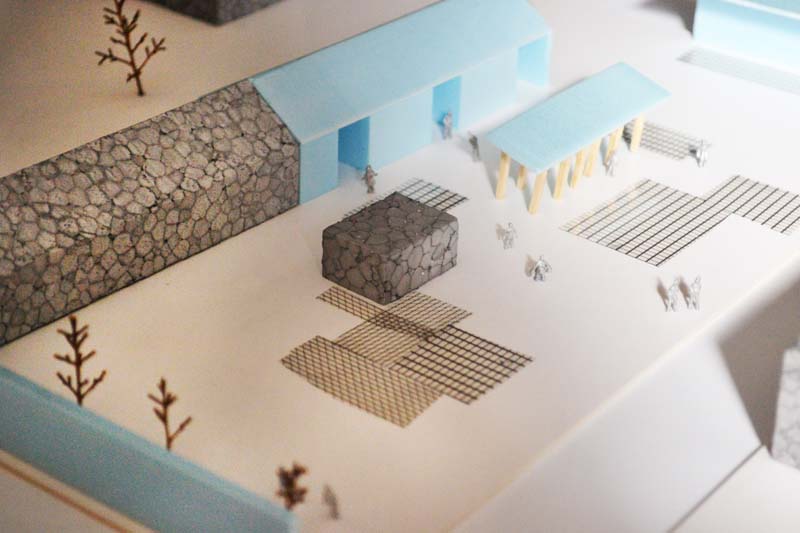



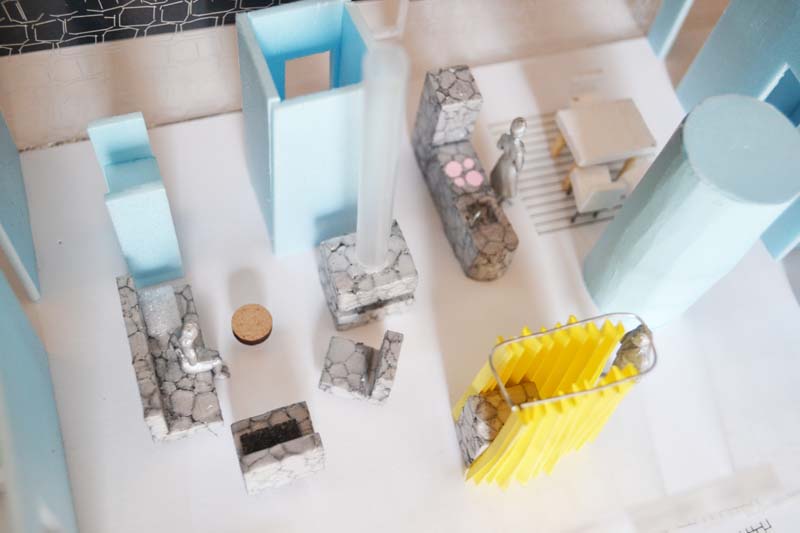

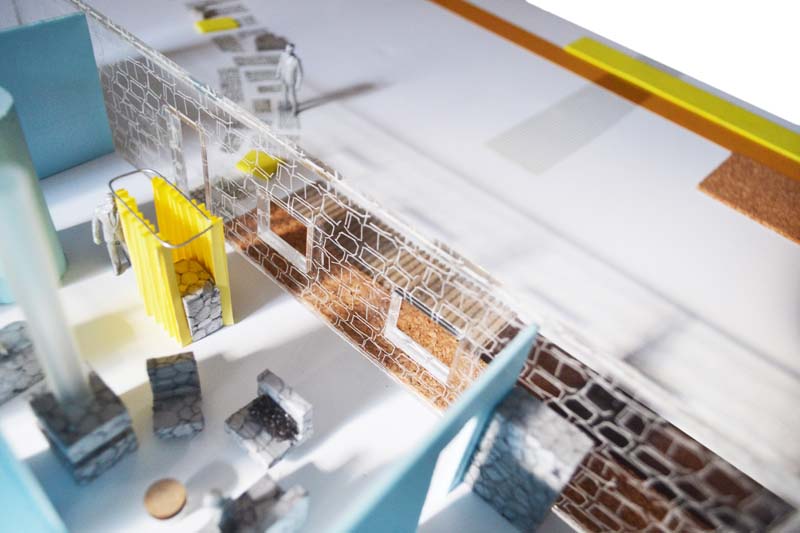

This diploma thesis deals with the inclusion of new populations in a village in the region, Vegoras. On the occasion of the refugee issue and the need for permanent settlement of the refugees and the large accumulation of populations in the urban centers in general, the question of return to the province was created. The interaction between refugee and indigenous peoples in a small village is being studied. The aim is, on the one hand, the smooth integration of new populations in already formed communities and, on the other, the stimulation of their economies and their development. There is an analysis-design methodology for a particular village, but it can be followed in other areas with corresponding features. Initially, 5 shared yard buildings are planned on uncultivated plots of land that are the populations of the populations. They include a local produce-shop, a workshop-exhibition, a semi-outdoor market and a lake observatory. Then a typology of rural dwelling is being developed and applied to abandoned buildings in order to create new densities. It consists of a core that is the basic and vital space of the home and alternative suggestions for the rest of the configuration according to the needs of future users.
Supervisor: Mitroulias Giorgos
Reference Number: 708


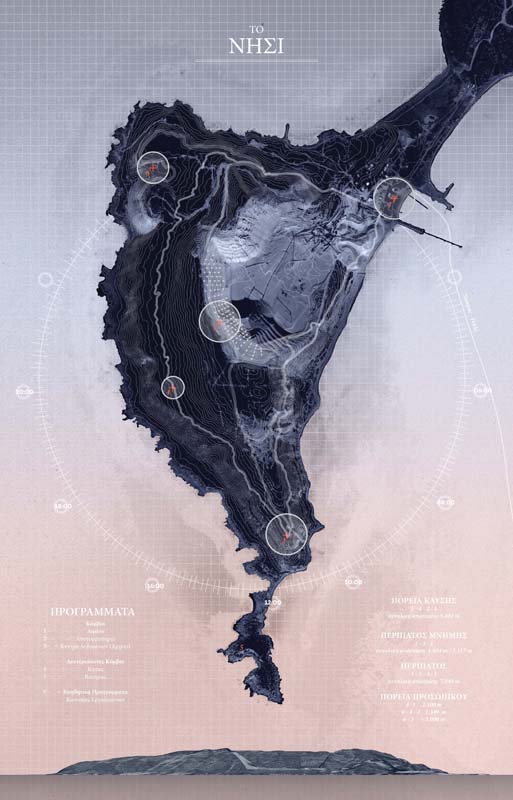

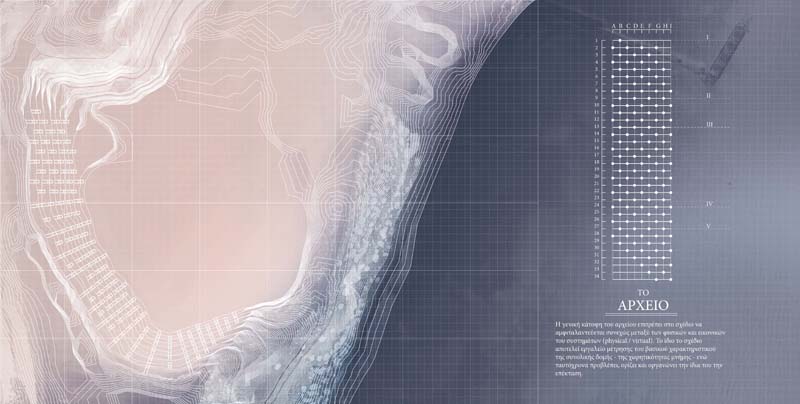

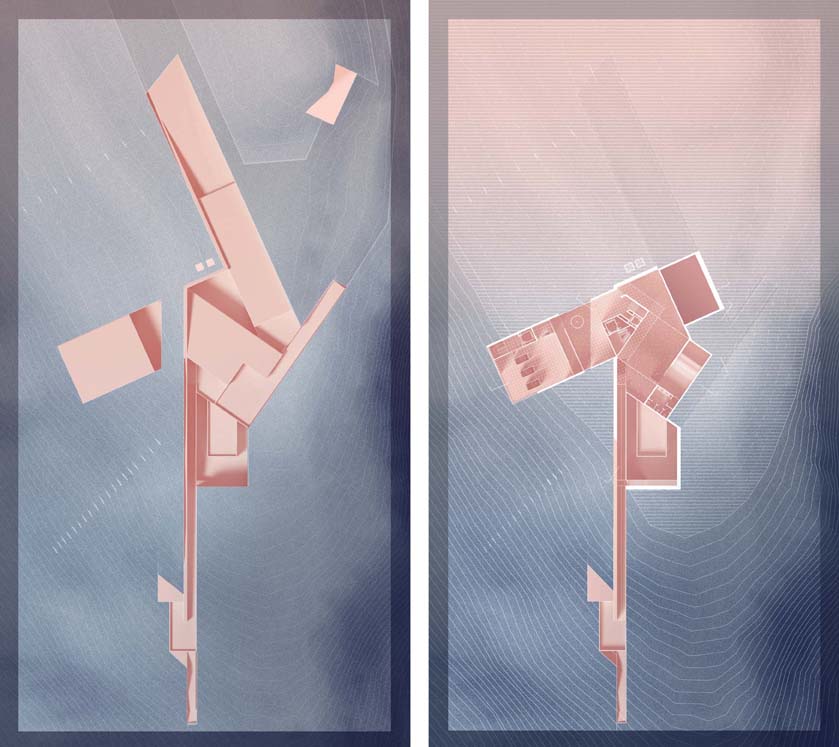

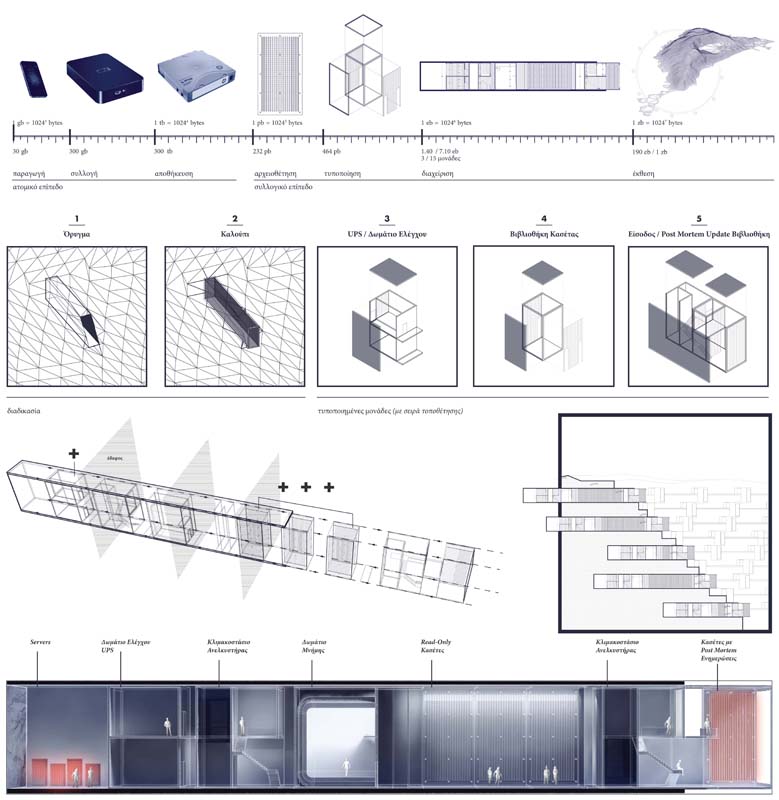



In the future, the past will not be excavated; it will be retrieved.
The thesis “Cold Data” builds on the premise according to which, as the volume of each individual’s personal data on the Cloud is growing exponentially larger, we collectively start questioning whether this digital existence is inferior or even simply supplementary to the corporeal one. Based on this thought, this thesis examines the ways through which this new condition is able to inform the landscapes of death and recharge their symbolical aspect as the prime landscapes of memory, body management and personal data archiving. More specifically, it attempts to reclaim the practice of archiving as the core of a commonly shared, accessible death culture and introduce a new typology for the death landscape of the digital era.
The proposed design draws references from the architecture of technological infrastructure such as server farms, data storage vaults and modular data centres while simultaneously keeping at its core the relationship between architecture and landscape, especially how the latter has marked the evolution of the death spaces since the 18th century. Special attention is paid on the reading of the island as a self-contained, existing-in-itself world of limits, otherness and imaginaires and the reading of the ground as the geophysical world of transmission, storage and archiving of information. Finally, the narrative of the architectural proposal is constructed on three, fundamental and complementary connections: the relationship between man and landscape (island), man and cognition - information (cenotaph) and finally, that between man and body (crematorium).
Supervisor: Paniyiris Costis
Reference Number: 669

